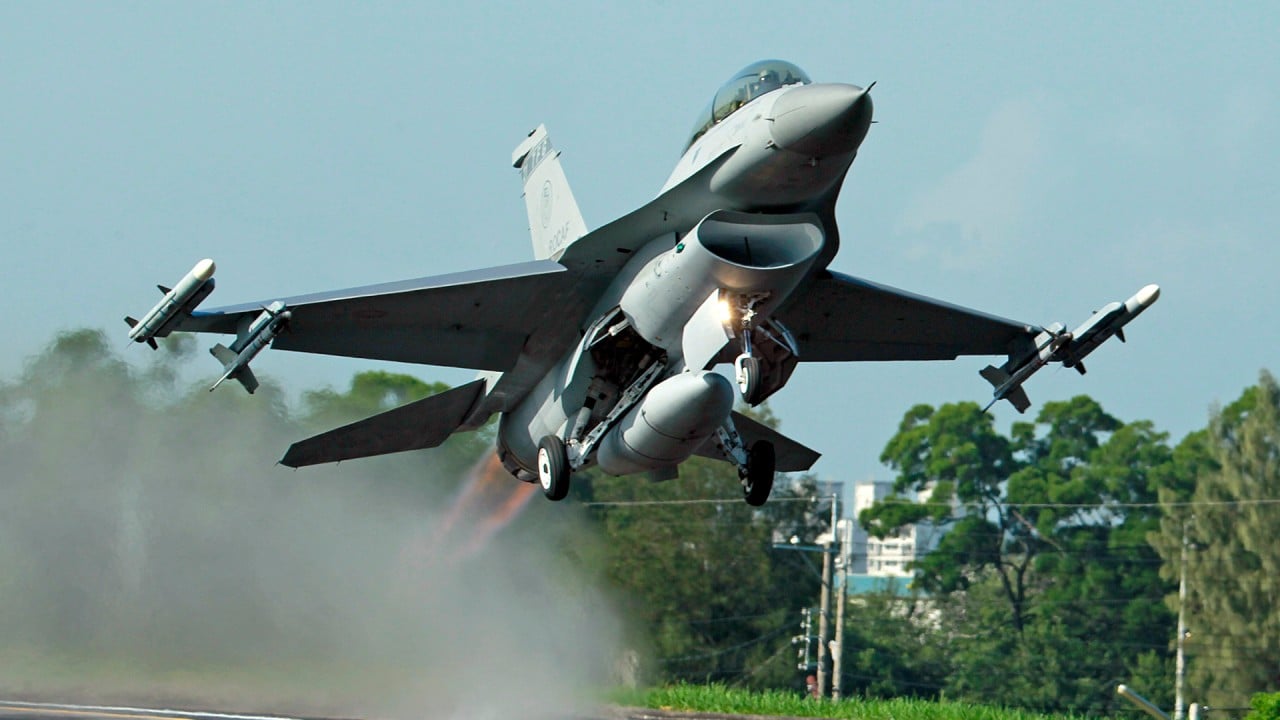
US backs US$2.4 billion Harpoon missile sale to Taiwan amid soaring tensions with China
- Proposed deal to include as many as 100 Harpoon Coastal Defence Systems built by Boeing
- Move comes after Beijing said it would impose sanctions on Boeing, Lockheed Martin and Raytheon Technologies over another approved arms sale
The US State Department signalled its approval for a potential US$2.4 billion sale of land-based anti-ship missiles to Taiwan, a move certain to anger Beijing and raise tensions further between the United States and China.
The Trump administration said in a statement Monday that it has notified Congress that it backs the proposed sale of as many as 100 Harpoon Coastal Defence Systems built by Boeing, which includes 400 land-based missiles.
The new Harpoons are intended to be launched from ground-mobile launchers, adding to Taiwan’s arsenal of air and submarine-launched Harpoons from earlier sales.
“The United States maintains an abiding interest in peace and stability in the Taiwan Strait and considers the security of Taiwan central to the security and stability of the broader Indo-Pacific region,” the State Department said in a statement.

02:28
Washington’s US$1.8 billion arms sale to Taiwan is first weapons deal of its kind in over 40 years
The move comes as already-high tensions between the US and China soar even higher.
China said earlier that it would impose unspecified sanctions on Boeing’s defence unit, Lockheed Martin and Raytheon Technologies after the US State Department approved US$1.8 billion in arms sales to Taiwan last week and made a previous announcement of 66 new F-16 fighters.
The latest sanctions will be imposed “in order to uphold national interests”, Chinese Foreign Ministry spokesman Zhao Lijian told reporters in Beijing on Monday.
China’s military monitored US warplane as it flew over Taiwan, PLA source says
August, the US and Taiwan completed the sale of 66 new model F-16 Block 70 aircraft from Lockheed. Zhao, the Chinese foreign ministry spokesman, condemned it at the time, saying it violated the One China principle, interferes in China’s internal affairs and will have a “major impact” on US-China relations.
In July, China – which considers Taiwan part of its territory – had announced sanctions on Lockheed Martin for a previous arms sale to the island.
With barely a week to go before the US presidential election, both President Donald Trump and Democrat Joe Biden have sought to portray themselves as the tougher candidate when it comes to China.
China’s moves this year to exercise greater control over Hong Kong prompted many analysts to see the risks rising for Taiwan. With his poll numbers flagging, Trump has sought to blame Beijing for soaring US coronavirus cases and deaths.

00:48
Military drills in Taiwan Strait are ‘necessary’ as US envoy Keith Krach visits island, China says
Two senior Trump administration officials have travelled to Taiwan in recent months, underscoring US support for the island and prompting China to bolster its military posture.
Ahead of Undersecretary of State Keith Krach’s visit to Taipei last month, for instance, two Chinese anti-submarine aircraft entered the air-defence-identification zone around the island, the Taiwanese Ministry of National Defence said in a statement. The incursion came after China’s military sparked concern by sending more than 20 aircraft into the zone for two days in a row.
Also last month, the People’s Liberation Army Air Force released a video showing H-6 bombers making a simulated strike on a runway that looked similar to one at Anderson Air Force Base on Guam, a key staging area for any US support for Taiwan.

